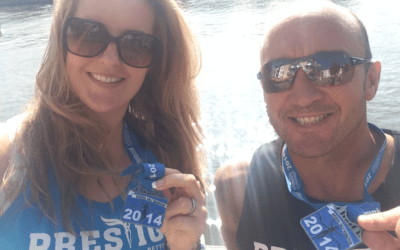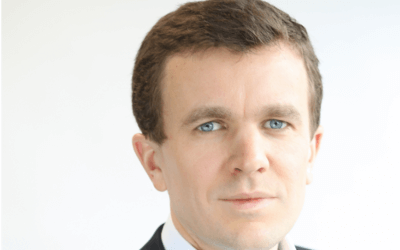
Lessons From 30 Years of Selling Mid-Market Businesses
This June marks 30 years since I, Lord Leigh of Hurley, co-founded Cavendish Corporate Finance. Over three decades of deal-making, Cavendish has advised on the sale of some 600 companies, mainly in the ‘mid-market’ range – that is, with transaction sizes ranging from £10-300 million. During this time we have advised on deals in all kinds of M&A environments – some frantic, others more subdued – and operated through the most extraordinary market conditions in recent memory, from the dotcom bubble and crash to the most severe financial crisis since the Great Depression.
There is, of course, no easy approach to selling a business: no two deals are ever the same. The external environment – from the appetites of potential buyers, to macroeconomic conditions and legal frameworks – are constantly changing and evolving. But over 30 fascinating years of deal-making, there are broader lessons I have learned that I believe stand the test of time.
Start Planning Early
A rushed deal is very rarely an optimal one. While entrepreneurs focus on running and growing their business, exit might – understandably – not be at the forefront of their thinking. But it’s crucial that planning for an exit should begin well before the final decision to make a sale has been made; as much as 36 months beforehand is ideal. Developing strategies to differentiate a business’s offering in the marketplace, expand into the right markets, and build and structure management teams in the right way are all things that take time, but ultimately make the difference when it comes to finding the best possible buyer.
Prepare Thoroughly, by Choosing the Right Advisor
One of the most important early decisions in a sales process is the choice of adviser. There are many factors to consider which depend on the type of deal being sought: the adviser’s industry expertise, their fees, their track record, and more subjective factors such as personal chemistry. Another noteworthy consideration is that many advisers represent both buyers and sellers, which can create potential conflicts of interest. Businesses should be sure that the advice they are receiving is always completely objective.
When an overseas buyer is involved, the stakes for choosing the right adviser are even higher. A genuinely international reach is obviously key; so too is an in-depth understanding of cultural differences, regulatory approval processes, and legal frameworks. Small and ostensibly insignificant details can stall an otherwise perfect deal – the right advisor will take every step to stop this.
Know how to command the highest multiple
Selling a business isn’t just about great negotiating skills. In fact, the bulk of the work should be done before the buyer and seller come to the table. Anticipating the thinking and the needs of potential buyers, and positioning accordingly, is essential to achieving the highest multiple.
Over my three decades at Cavendish, I’ve observed time and time again that the businesses which strike exceptional deals are the ones that carefully dissect how they can provide unique value to an acquirer, and prioritise strengthening in these areas. This might, for example, involve expanding into key international markets, implementing an effective buy and build strategy, or making high quality additions to the management team.
Position for the ‘right’ buyer, but be flexible
What constitutes the ‘right’ deal for a business undergoing a sale largely depends on the objectives and motivations of its owners. If the goal is to make a clean break and extract maximum value from the business, then a trade sale is often the best route. If, on the other hand, the goal is to stay with the business for some period of time, private equity typically offers a better fit. That said, it is important to be flexible. Over the years, I have advised many companies which had a specified exit route in mind but, by keeping their options open, found better avenues they would not otherwise have considered.
Once the right type of buyer has been identified, the next step is to transform the company into a suitable proposition. Trade buyers and private equity buyers often prioritise different priorities in an acquisition. Trade buyers, for example, are likely to be concerned about the potential for creating synergies with their existing businesses – how well do the entities complement one another, and where can their merger generate cost savings and efficiencies? Positioning for these questions can make the difference between a good deal and a great one.
Do not underestimate the importance of due diligence
Due diligence has always been an important part of the deal-making process, but never more than it is today. This is because there has been a flight to quality in M&A in recent years, meaning that buyers will almost invariably identify weaknesses in a business if its management team does not get there first. Under British law, the information a business preparing for sale is required to provide is extensive – tax liabilities, intellectual property, employment contracts and leases. Buyers will have their own demands which may be much more comprehensive still.
Failing at the due diligence stage could put a serious delay in negotiations, significantly prolong proceedings, or, in the worst case, even lead to the termination of the deal. Management teams must devote sufficient time and resources to this area, ensuring their financial and management accounts are as comprehensive and transparent as possible.
Know the cycle
On a final note, my three decades years of deal-making have given me exposure to every type of M&A environment. Today, the value of M&A globally – including in the mid-market – is hitting record highs. During my time at Cavendish, I have experienced the market’s sharp rise in the 1990s, and its precipitous falls in the dotcom and financial crisis eras. Within this bigger narrative, each industry and transaction size bracket have their own stories playing out, often running quite independently to one another. Making a sale when the market is hot is an art as much as a science – but its crucial to securing the best valuation.























